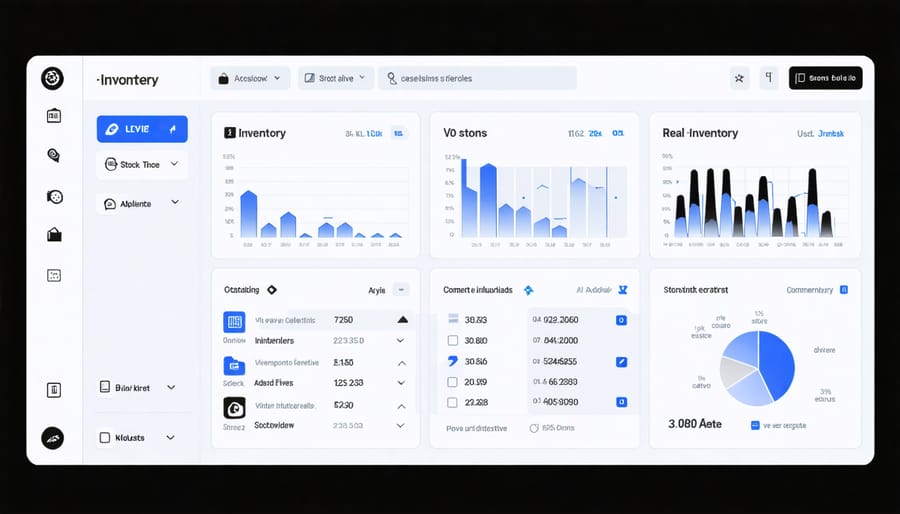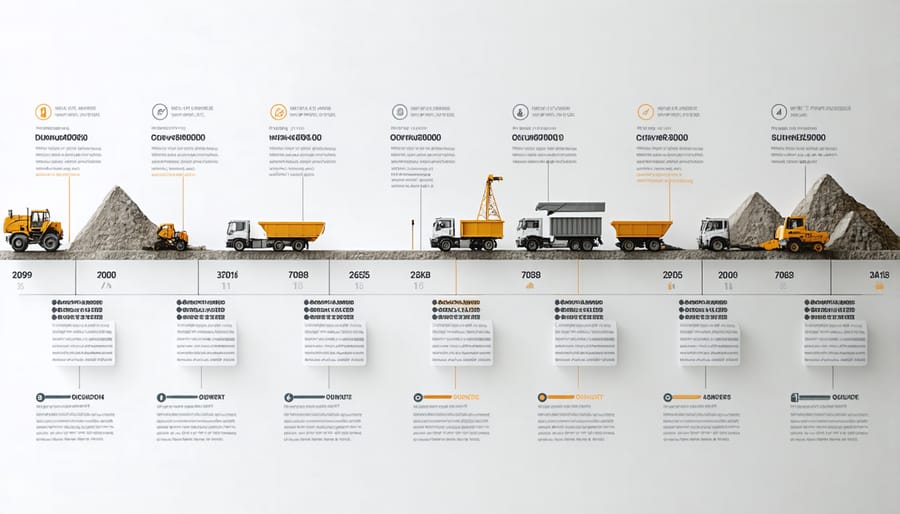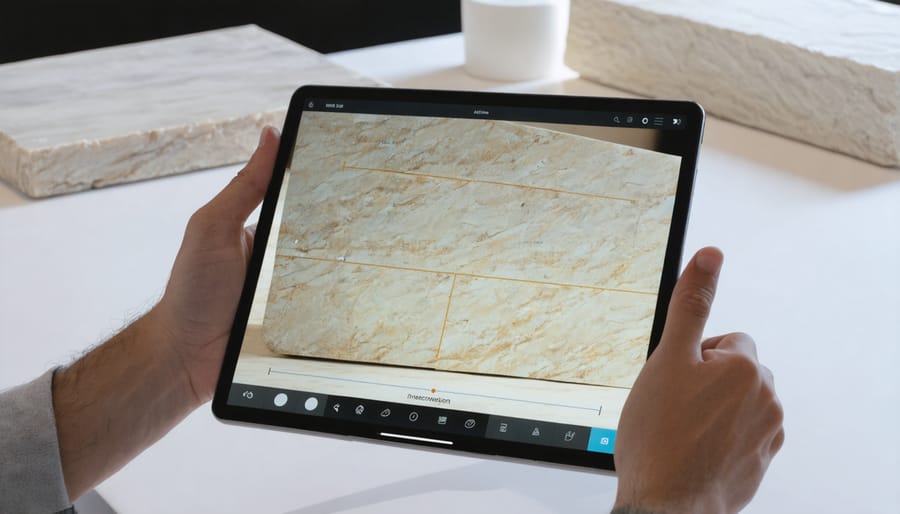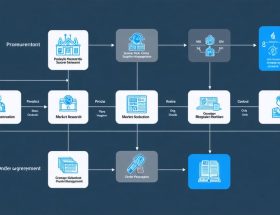Transform your stone supply chain operations with advanced digital optimization tools that deliver real-time visibility, predictive analytics, and automated decision-making capabilities. Modern procurement process optimization platforms integrate seamlessly with existing systems, reducing lead times by up to 40% and minimizing inventory holding costs across the natural stone industry.
Industry leaders leverage machine learning algorithms to forecast demand patterns, optimize stock levels, and automatically adjust ordering parameters based on historical data and market trends. These intelligent systems eliminate manual tracking processes, prevent stockouts, and ensure just-in-time delivery of premium stone materials to project sites.
Cloud-based supply chain management solutions now enable real-time collaboration between quarries, fabricators, and contractors while providing end-to-end traceability for every stone slab. By implementing these digital tools, companies can achieve unprecedented efficiency in their stone procurement and delivery operations while maintaining strict quality control standards throughout the supply network.
Focus on these mission-critical capabilities when evaluating supply chain optimization platforms for your stone business: automated inventory management, predictive maintenance scheduling, route optimization, and integrated quality control systems. The right combination of these tools can dramatically improve operational efficiency while reducing costs and delivery times.
Digital Inventory Management Systems
Real-time Stock Monitoring
Modern stone suppliers are leveraging sophisticated digital systems to monitor inventory levels and material movement in real-time. These systems use a combination of RFID tags, barcode scanners, and IoT sensors to track individual stone slabs and blocks from quarry to fabrication facility to project site.
Advanced monitoring platforms provide instant visibility into stock levels across multiple locations, helping businesses maintain optimal inventory without overextending storage capacity. These systems can automatically trigger reorder alerts when supplies reach predetermined thresholds, ensuring consistent material availability while preventing stockouts.
Predictive analytics play a crucial role in forecasting future inventory needs. By analyzing historical data, seasonal trends, and current project pipelines, these tools can anticipate demand fluctuations and recommend appropriate stocking levels. This proactive approach helps companies better allocate resources and negotiate with suppliers.
Many systems now incorporate mobile capabilities, allowing field personnel to check stock levels, update inventory counts, and process material transfers directly from their smartphones or tablets. Real-time synchronization ensures all stakeholders have access to accurate inventory data, reducing communication delays and preventing ordering errors.
Digital monitoring solutions also help track material waste, identify slow-moving stock, and optimize warehouse layouts for efficient material handling. By maintaining detailed records of stone movement and usage patterns, businesses can make data-driven decisions to streamline their supply chain operations and improve overall efficiency.

Automated Reordering Systems
Automated reordering systems represent a crucial advancement in modern supply chain management, particularly in the natural stone industry where maintaining optimal inventory levels is critical. These intelligent systems utilize sophisticated algorithms to monitor stock levels in real-time and automatically generate purchase orders when supplies reach predetermined thresholds.
By implementing automated reordering, stone suppliers and fabricators can eliminate the risk of stockouts while preventing excess inventory. The system tracks historical usage patterns, seasonal demands, and current project requirements to calculate optimal reorder points and quantities. This data-driven approach ensures that popular stone varieties and essential materials are always available without tying up excessive capital in inventory.
Most modern automated reordering platforms integrate seamlessly with existing inventory management systems and can be customized to account for supplier lead times, minimum order quantities, and storage capacity constraints. The system can also factor in variables specific to the stone industry, such as material availability, quarry production schedules, and shipping logistics.
Key benefits include reduced carrying costs, minimized emergency orders, improved cash flow management, and freed-up staff time previously spent on manual inventory tracking. For stone suppliers managing multiple warehouses or locations, these systems can coordinate orders across facilities to optimize bulk purchasing discounts while maintaining appropriate stock levels at each site.
Project Planning Software

Timeline Optimization Tools
Effective timeline management is crucial in natural stone supply chains, where precise coordination between quarrying, fabrication, delivery, and installation can significantly impact project success. Today’s modern project planning tools offer sophisticated features to streamline these complex schedules.
Leading timeline optimization solutions provide real-time visibility into each project phase, allowing managers to track stone materials from quarry to jobsite. These tools typically include dynamic Gantt charts, automated milestone tracking, and smart alerts that notify stakeholders of potential delays or scheduling conflicts.
Key features often include:
– Installation schedule synchronization
– Delivery window optimization
– Resource allocation management
– Weather impact forecasting
– Contractor availability tracking
– Multi-project timeline coordination
These systems can automatically adjust delivery schedules based on installation progress, helping prevent costly storage fees or project delays. For example, if an installation team encounters unexpected issues that slow their progress, the software can automatically reschedule upcoming deliveries to maintain efficient workflow.
Many platforms also integrate with GPS tracking systems, providing accurate delivery estimates and allowing real-time route optimization. This capability helps ensure that valuable stone materials arrive precisely when needed, reducing both storage requirements and the risk of damage from excessive handling.
The most effective tools offer mobile accessibility, enabling field teams to update installation progress and confirm delivery receipts instantly, keeping all stakeholders informed and allowing for rapid schedule adjustments when necessary.
Resource Allocation Features
Modern supply chain optimization tools offer sophisticated resource allocation features that help stone industry professionals maximize efficiency and reduce waste. These tools provide comprehensive solutions for managing equipment, labor, and materials across multiple projects and locations.
Equipment management modules enable real-time tracking of machinery utilization, maintenance schedules, and availability. Project managers can easily allocate heavy equipment like cranes, forklifts, and cutting machines based on project demands and location proximity, preventing costly downtime and overlapping schedules.
Labor resource planning features help optimize workforce deployment by matching skilled workers with specific project requirements. These systems consider factors such as worker qualifications, availability, and geographic location to ensure efficient staff allocation. Built-in scheduling algorithms can automatically adjust assignments based on project timeline changes or unexpected absences.
Material resource management capabilities allow companies to track inventory levels, monitor material consumption rates, and forecast future needs accurately. Advanced tools integrate with warehouse management systems to provide real-time visibility of stone slabs, tiles, and accessories across multiple locations. This integration helps prevent stockouts while minimizing excess inventory.
Many modern platforms also include predictive analytics that help identify potential resource bottlenecks before they impact project timelines. These tools can suggest optimal resource allocation strategies based on historical data, current project requirements, and future demand forecasts, enabling proactive decision-making and improved operational efficiency.
Some systems also offer mobile accessibility, allowing field personnel to update resource status and requirements in real-time, ensuring that allocation decisions are based on the most current information available.
Transportation and Logistics Tools
Route Planning Software
Route planning software has revolutionized delivery operations in the stone industry by optimizing transportation routes and schedules for maximum efficiency. These sophisticated tools use advanced algorithms to analyze multiple factors including distance, traffic patterns, delivery windows, vehicle capacity, and customer requirements.
Modern route planning solutions offer real-time tracking capabilities, allowing dispatchers to monitor deliveries and make instant adjustments when delays or changes occur. This dynamic approach helps stone suppliers maintain reliable delivery schedules while reducing fuel consumption and vehicle wear.
Key features typically include:
– Multi-stop route optimization
– Real-time traffic integration
– Delivery window management
– Load capacity calculations
– Driver schedule coordination
– Mobile app integration for drivers
– Customer notification systems
These tools can significantly reduce transportation costs by minimizing travel distance and time between deliveries. For stone suppliers handling multiple deliveries daily, route planning software can decrease fuel consumption by 10-30% and increase the number of deliveries per vehicle by 15-25%.
The software also helps maintain customer satisfaction by providing accurate delivery estimates and proactive updates. Many solutions offer customer portals where clients can track their deliveries in real-time and receive automated notifications about estimated arrival times.
When selecting route planning software, companies should consider their specific needs, fleet size, and integration requirements with existing systems. Most providers offer scalable solutions that can grow with your business needs.
Load Optimization Systems
Load optimization systems play a crucial role in maximizing transport efficiency while ensuring the safe handling of natural stone materials. These sophisticated tools combine advanced algorithms with real-time data analysis to determine the most efficient loading patterns, routes, and vehicle utilization strategies.
Modern load optimization platforms incorporate multiple factors, including weight distribution, material dimensions, fragility considerations, and risk management in stone projects. They calculate optimal arrangements for different stone types, from delicate marble slabs to robust granite blocks, ensuring both safety and space efficiency during transport.
Key features of these systems typically include:
– 3D load planning visualization
– Weight distribution calculators
– Route optimization integration
– Real-time tracking capabilities
– Automated documentation generation
These tools help stone suppliers and contractors reduce transportation costs by up to 25% while minimizing material damage during transit. For example, leading quarries use load optimization software to arrange multiple stone slabs within shipping containers, maximizing space utilization while maintaining proper support and protection for each piece.
By implementing these systems, companies can significantly reduce the number of required shipments, lower fuel consumption, and ensure compliance with transportation regulations while protecting valuable stone materials throughout the delivery process.
Quality Control and Tracking Solutions
Digital Quality Inspection Tools
Digital quality inspection tools have revolutionized how natural stone suppliers monitor and maintain product standards throughout the supply chain. Modern scanning devices equipped with high-resolution cameras can detect surface irregularities, color variations, and structural defects in stone materials with remarkable precision. These tools typically integrate with cloud-based software platforms, allowing real-time data sharing across different facility locations.
Quality control teams now use portable spectrophotometers to ensure consistent color matching between stone batches, while mobile apps enable quick documentation and sharing of inspection results. Advanced imaging systems can create detailed 3D maps of stone surfaces, helping identify potential issues before materials reach the installation site.
Digital measurement tools have largely replaced manual methods, offering greater accuracy in determining stone dimensions, thickness variations, and surface flatness. These devices can instantly upload measurements to central databases, creating comprehensive quality records for each shipment.
Many inspection platforms now incorporate artificial intelligence to detect patterns and predict potential quality issues before they become problems. This predictive capability helps suppliers maintain consistent quality standards while reducing waste and rework costs. The data collected through these digital tools also provides valuable insights for process improvement and supplier evaluation.

Material Tracking Systems
Modern material tracking systems revolutionize how natural stone is monitored throughout its journey from quarry to final installation. These sophisticated solutions combine RFID technology, GPS tracking, and cloud-based software to provide real-time visibility of stone materials at every stage of the supply chain.
Barcode and QR code systems allow for quick identification of stone slabs, bundles, and finished pieces. Each piece can be tagged with unique identifiers that store crucial information including material type, dimensions, finish, and quality grade. This digital tracking eliminates manual paperwork and reduces errors in inventory management.
Advanced tracking platforms enable stakeholders to monitor material location, condition, and handling history through user-friendly dashboards. Project managers can receive automated alerts about delivery schedules, potential delays, or quality issues. This proactive approach helps prevent costly installation delays and ensures materials arrive at job sites on time.
Integration with warehouse management systems provides accurate inventory counts and location data, making it easier to locate specific materials when needed. Many systems also include photo documentation capabilities, allowing quality control teams to visually verify material conditions throughout transport and storage.
These tracking solutions ultimately improve accountability, reduce material waste, and help maintain consistent quality control standards across the supply chain.
The implementation of supply chain optimization tools in the natural stone industry has proven transformative, offering substantial benefits in efficiency, cost reduction, and project management. Companies that have embraced these technologies report significant improvements in inventory accuracy, reduced waste, and better prediction of delivery times. When considering long-term cost considerations, these tools demonstrate clear ROI through improved resource allocation and reduced operational expenses.
Looking ahead, the stone industry can expect continued evolution in supply chain optimization technology. Artificial intelligence and machine learning will play increasingly important roles, offering more sophisticated predictive analytics and automation capabilities. The integration of IoT sensors and blockchain technology promises enhanced transparency and traceability throughout the supply chain, addressing growing demands for sustainability and material authenticity verification.
Emerging trends point toward more cloud-based solutions that offer greater accessibility and real-time collaboration capabilities. Mobile applications will become more prevalent, allowing for immediate updates and decision-making from any location. As these tools continue to advance, we can anticipate more seamless integration between different systems, creating comprehensive end-to-end solutions that address the unique challenges of stone supply chain management while maintaining the industry’s high quality standards and customer satisfaction levels.










